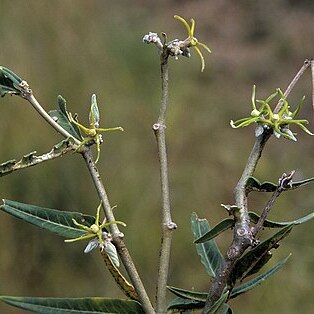Perennial herb, tuber globose to turnip-shaped. Stems erect, decumbent or twining, 150450 mm long. Leaves sessile; blade linear to elliptic, 10-100 x 4-12 mm, margins entire or weakly revolute, narrowed or rounded at base, pubescent. Flowers: corolla lobes 12-16 mm long; corona ± 4x as long as corolla tube, white or yellow; corolla yellow to green to brown; Oct.-Jun. Fruit a follicle.
Erect or sometimes twining perennial herb. Stems 150-450 mm long. Leaves linear, 4-20 times as long as broad, narrowed or rounded at base. Corolla lobes 12-16 mm long. Corona ± 4 times as long as corolla tube. Flowers greenish; corona white.

